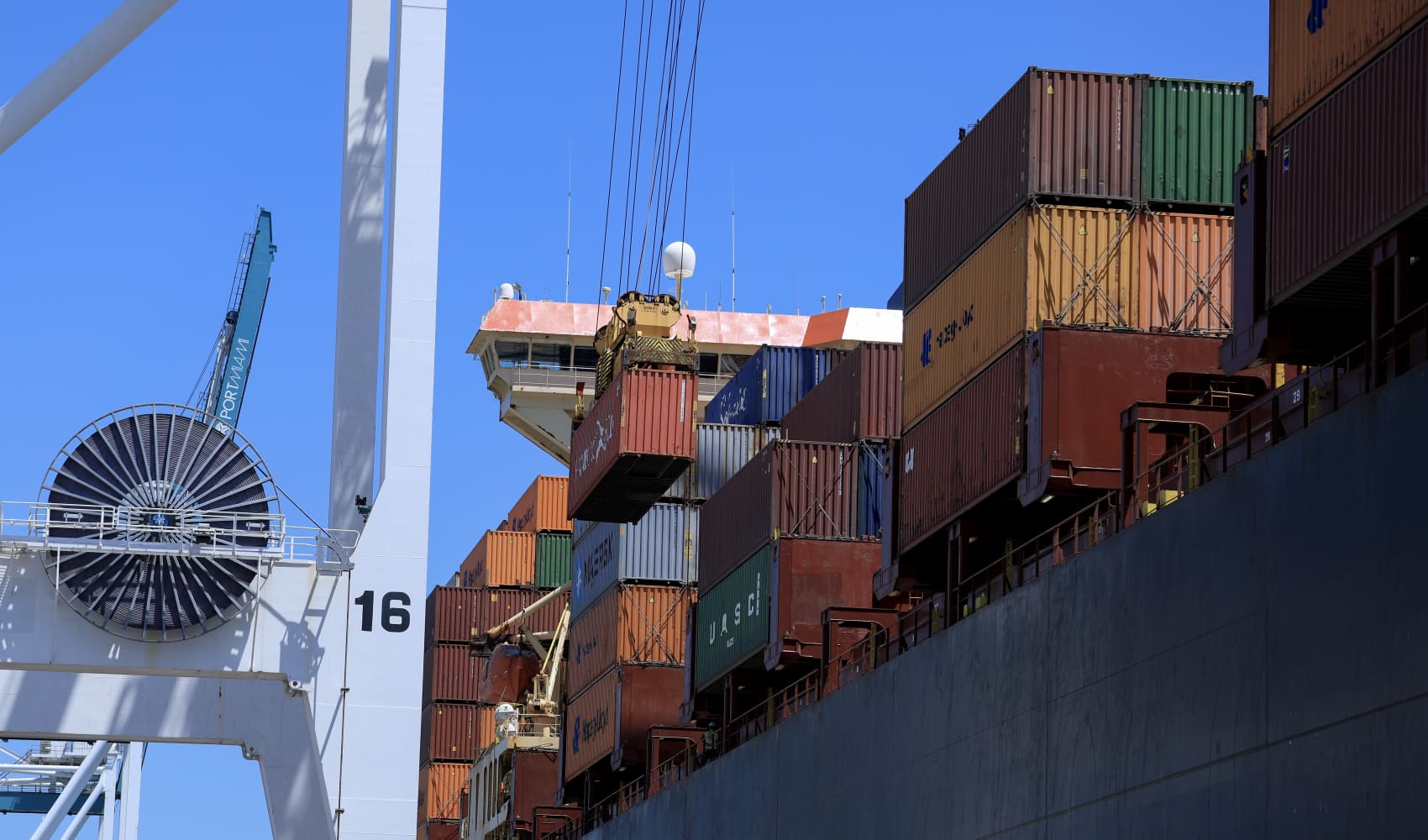Japan Inflation at 3.6%: BOJ's Target Broken! What's Next?
Japan Inflation Soars: Is the BOJ Losing Control?
Introduction: A Boiling Point for the Japanese Economy?
Hold on to your yen, folks! Japan's inflation rate has officially crossed the Bank of Japan's (BOJ) 2% target for a whopping three consecutive years. Specifically, the latest data shows a 3.6% year-on-year increase in March. That’s quite a leap, isn’t it? This isn't just a blip on the radar; it's a persistent trend that raises some serious questions about the BOJ's monetary policy and the overall health of the Japanese economy. Are we witnessing a controlled burn, or is the economic engine overheating? Let's dive in and explore the implications of this inflationary surge.
Headline Inflation: A Closer Look at the Numbers
March's 3.6% Figure: What Does it Mean?
The headline inflation rate of 3.6% is significant. It signifies that the cost of goods and services for the average Japanese consumer is increasing at a faster pace than the BOJ deems acceptable. While slightly lower than February's 3.7%, it's still a considerable jump from the BOJ's 2% target. Think of it like a pot of water simmering on the stove – a little movement is fine, but a full boil can lead to spills and instability. This extended period above the target suggests that the heat is being turned up, and we need to understand why.
Core Inflation: Peeling Back the Layers
Core vs. Headline: Understanding the Differences
Now, things get a little more nuanced when we talk about core inflation. Headline inflation includes everything – food, energy, everything! Core inflation, however, attempts to strip out some of the volatility. We have two types of core inflation to examine here.
Core Inflation (Excluding Fresh Food): A Steady Rise
The core inflation rate, which excludes fresh food prices, came in at 3.2%, matching Reuters' expectations and climbing from 3% in February. Fresh food prices can fluctuate wildly due to weather patterns and other unpredictable factors. Excluding them provides a clearer picture of underlying inflationary pressures.
"Core-Core" Inflation (Excluding Food and Energy): The BOJ's Favorite Metric?
Then there's the "core-core" inflation rate, which excludes both fresh food and energy prices. This is often considered the purest measure of underlying inflation, and it's closely watched by the BOJ. Why? Because it attempts to filter out the most volatile components, leaving behind the signals that are most likely driven by persistent factors like wage growth and domestic demand. This "core-core" rate jumped to 2.9% from 2.6% in the previous month. Is this a subtle warning sign that the BOJ can't ignore?
The BOJ's Dilemma: Balancing Growth and Inflation
Sticking to Ultra-Loose Monetary Policy: Is it Sustainable?
The Bank of Japan has maintained its ultra-loose monetary policy for years, aiming to stimulate economic growth and finally break free from decades of deflation. But with inflation now consistently exceeding their target, they face a tough decision: continue with the stimulus and risk further fueling inflation, or tighten monetary policy and potentially stifle economic growth? It's like walking a tightrope – too much pressure on one side, and you fall. The BOJ has historically prioritized economic growth over controlling inflation, but can they continue to do so in the face of rising prices?
Global Pressures: A Worldwide Phenomenon
The Impact of Global Inflation: Are We All in This Together?
It's important to remember that Japan isn't the only country grappling with inflation. The global economy has been hit hard by supply chain disruptions, rising energy prices, and increased demand following the pandemic. These global factors contribute to inflationary pressures in Japan, making it more challenging for the BOJ to control inflation through domestic policy alone. Are we simply witnessing a global tide of inflation that Japan can't escape?
The U.S.-Japan Trade Talks: A Complicating Factor
Trump's "Big Progress": What Does It Mean for Inflation?
Adding another layer of complexity is the ongoing trade talks between Japan and the U.S. Former U.S. President Donald Trump's claim of "big progress" suggests that trade relations may be evolving. Changes in trade agreements can impact import prices, potentially influencing inflation. For example, if tariffs are reduced, it could lower the cost of imported goods, helping to curb inflation. Conversely, new trade barriers could drive prices higher. The outcome of these trade talks could either exacerbate or alleviate inflationary pressures in Japan.
Impact on Japanese Consumers: Feeling the Pinch
Rising Prices and Household Budgets: How Are People Coping?
For the average Japanese consumer, rising inflation means that their purchasing power is being eroded. The same amount of yen buys less than it did a year ago. This can put a strain on household budgets, especially for low-income families. Are consumers cutting back on spending? Are they delaying major purchases? The impact of inflation on consumer behavior is a crucial factor to watch.
Wage Growth: The Missing Piece of the Puzzle
The Need for Higher Wages: Can They Keep Pace with Inflation?
One of the key goals of the BOJ's monetary policy has been to stimulate wage growth. Higher wages would allow consumers to maintain their purchasing power even as prices rise. However, wage growth in Japan has been stubbornly slow to materialize. Unless wages start to increase significantly, rising inflation could lead to a decline in real incomes, potentially dampening consumer demand.
Expert Opinions: What Are the Economists Saying?
Analyzing the Inflation Data: Differing Perspectives
Economists have varying opinions on the implications of Japan's rising inflation. Some argue that it's a sign of a recovering economy and a welcome departure from deflation. Others worry that it could become entrenched and lead to economic instability. It's important to consider these different perspectives to get a well-rounded understanding of the situation.
The Future of Monetary Policy in Japan: What's Next for the BOJ?
Policy Changes on the Horizon?: Is a Shift Inevitable?
The BOJ faces a critical juncture. If inflation continues to exceed the 2% target, they may be forced to consider tightening monetary policy, even if it means risking slower economic growth. This could involve raising interest rates or reducing asset purchases. Will the BOJ finally abandon its ultra-loose monetary policy stance? Only time will tell.
Potential Risks and Opportunities: Navigating the Economic Landscape
Economic Instability vs. Sustainable Growth: Weighing the Options
Rising inflation presents both risks and opportunities for the Japanese economy. On the one hand, it could lead to economic instability if it spirals out of control. On the other hand, it could be a catalyst for sustainable growth if it's accompanied by rising wages and increased productivity. The key is to manage inflation effectively and ensure that it doesn't erode consumer confidence or discourage investment.
Investment Strategies in an inflationary environment: How to protect your assets
Real Estate, Stocks, or Bonds?: Where to put your money
In an inflationary environment, it is essential to consider investment strategies that can help protect the value of your assets. Investing in real estate can provide a hedge against inflation as property values and rental income tend to rise with inflation. Stocks, especially those of companies with pricing power, can also offer protection as they can pass on increased costs to consumers. However, bond yields may not keep pace with inflation, potentially leading to a loss in real terms. Diversifying your portfolio and consulting with a financial advisor can help you navigate the inflationary landscape and make informed investment decisions.
Technological impacts on Japan Inflation
Artificial intelligence, Automation, Digital Transformation
Technological innovation and digitalization are vital factors in Japan's efforts to manage inflation. Artificial Intelligence(AI) can optimize supply chains and production processes, leading to more efficient resource allocation and reduced costs. Automation can enhance productivity and lower labor expenses. Digital transformation can streamline operations and improve pricing strategies. Embracing and leveraging technological advancements can help mitigate the impact of inflation and promote sustainable economic growth in Japan.
Conclusion: A Tightrope Walk for the Japanese Economy
Japan's inflation rate is a complex issue with no easy solutions. The fact that inflation is above the BOJ's target for three straight years signals a shift in the economic landscape. The BOJ must carefully balance the need to control inflation with the desire to maintain economic growth. The outcome of U.S.-Japan trade talks, wage growth, and global economic factors will all play a role in shaping the future of the Japanese economy. For now, the Japanese economy is walking a tightrope, and the world is watching to see if it can maintain its balance.
Frequently Asked Questions (FAQs)
Here are some frequently asked questions to help you understand Japan's inflation situation better:
- Q: Why is inflation happening in Japan?
A: Several factors contribute to inflation, including global supply chain disruptions, rising energy prices, increased domestic demand, and the BOJ's ultra-loose monetary policy. It's a complex mix of both internal and external pressures.
- Q: Is inflation always a bad thing?
A: Not necessarily. A moderate level of inflation (around 2%) is generally considered healthy for an economy. It encourages spending and investment. However, high inflation can be detrimental, eroding purchasing power and creating economic instability.
- Q: What is the BOJ doing to address inflation?
A: So far, the BOJ has maintained its ultra-loose monetary policy, hoping that inflation will lead to sustainable economic growth and wage increases. However, if inflation continues to rise, they may be forced to consider tightening monetary policy.
- Q: How does inflation affect the average Japanese consumer?
A: Inflation reduces the purchasing power of the yen, meaning that consumers have to pay more for goods and services. This can put a strain on household budgets, especially for those on fixed incomes.
- Q: What can I do to protect myself from inflation?
A: Consider investing in assets that tend to hold their value during inflationary periods, such as real estate, stocks, or commodities. Also, try to negotiate a higher salary to keep pace with rising prices.








